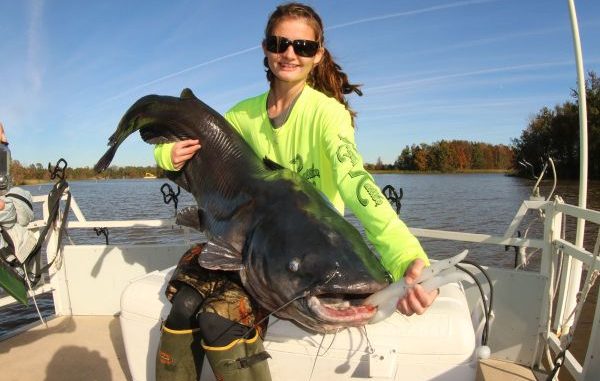
Back trolling is ‘most effective’ tool for guide
Back trolling is a good technique for putting catfish in the boat, and with the right tools it is a pretty easy procedure.
Capt. Gene Crawford back trolls on Santee Cooper, and said it’s the most effective way he’s found for catching cats.
One of the most important tools for back trolling is a drift anchor, which is basically a parachute made for use underwater. It slows the boat’s speed, allowing anglers to drag baits through areas slowly enough to let catfish see, smell and taste the bait.
“Sometimes you’ll need two or even three drift anchors, depending on the wind speed,” Crawford said.
On windless days, Crawford cranks his outboard, puts it in reverse, but still uses a drift anchor to help keep his speed in check.
Once he’s moving, Crawford puts out several lines with snag-less weights made using a thin fabric material stuffed with buckshot. A 2- to 3-foot leader with a cork is attached next.
The cork doesn’t bring the bait to or anywhere near the surface. It simply keeps the bait slightly off the bottom.
A 5/0 circle hook is next, with a piece of cut bait threaded on.
Another important tool for back trolling is electronics.
“You’ve got to keep an eye on what you’re moving through,” Crawford said. “You want to stay in water that is changing in depths. Those changes are what attract the catfish. Slopes, deep holes, and ledges all work in your favor.
“When you drift through a good-looking area, drift it more than once.”
Good rod holders are also necessary. Crawford has Driftmaster rod holders mounted to his boat rails.
It’s also important for anglers to understand that the rod holder don’t just hold the rod in place until a fish starts biting.
“The rods need to stay in the rod holder until the fish is hooked,” Crawford explained. “Many anglers want to grab the rod an set the hook themselves, but it’s way more effective if they are patient and let the rod bounce a little during the bite.
“Once the rod bends over and stays bent over, then it’s time to remove it from the rod holder.”
And once an angler does remove the rod, Crawford said to just start reeling.
“There’s no need to rear back to set the hook. It’s already set,” he said. “Between the rod holder and the circle hook, that part of the job is done.”


